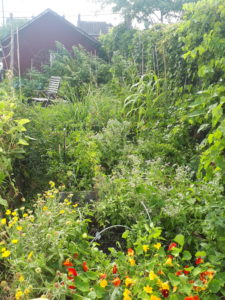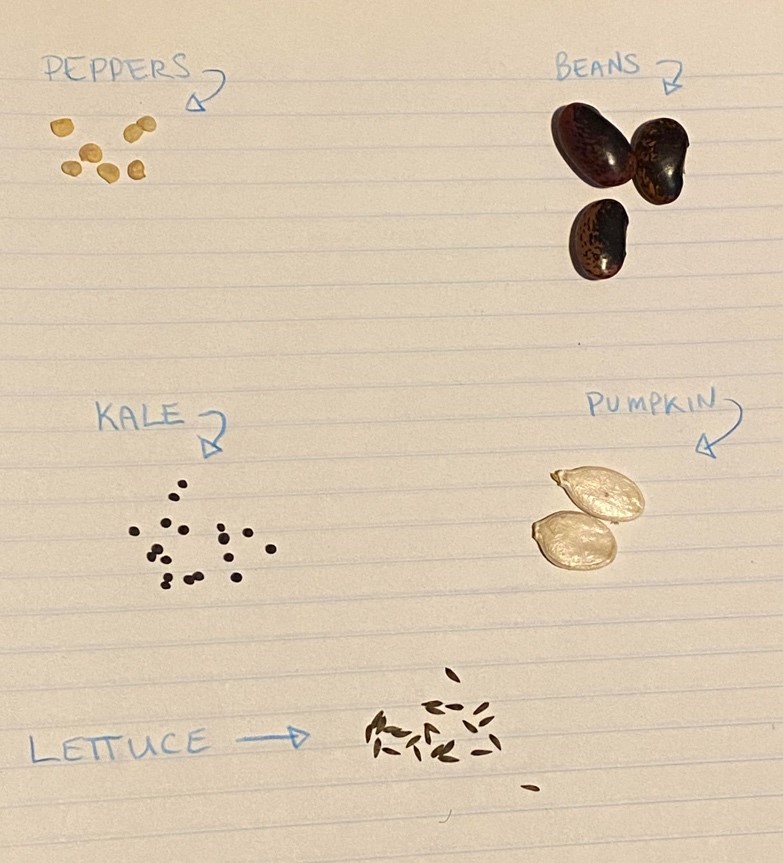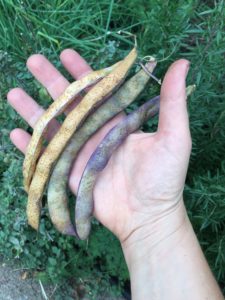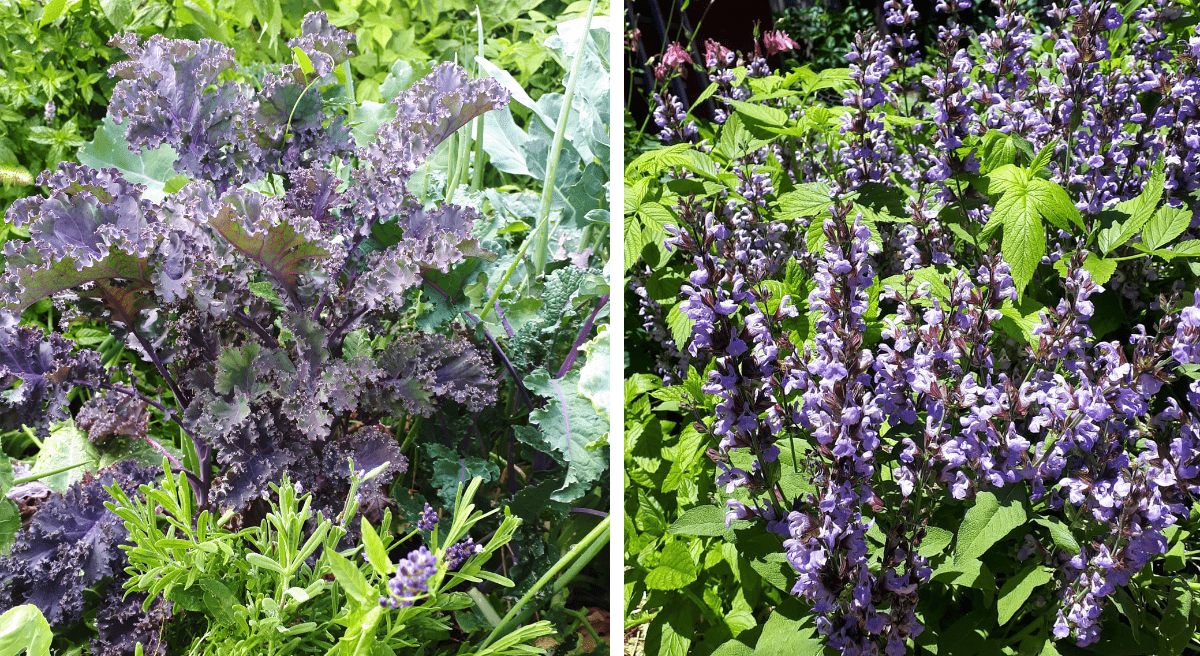Get Seed-Savvy! Tips and Tricks from a BUFCO Gardener

Have you been considering trying your hand at growing fruit, veggies and flowers from seed, but don’t know where to begin? Look no further! I am going to lay it out for you so if and when you take this leap, you will be able to do so confidently and responsibly.
I will discuss some of the things BUFCO takes into consideration when ordering seeds. I’ll also cover a few topics, including how we choose our seed suppliers, how to identify the differences between various seed types, how to store and test germination of your own seed collection, and things to look for when choosing seeds for your unique growing conditions.
The Safe Seed Pledge
We have a few favourite seed suppliers. Firstly, we make sure to look for seed growers who have taken the “Safe Seed Pledge”. Here is a great list of Canadian seed companies that have taken the Safe Seed Pledge. Some of our local favourites include Urban Harvest, Matchbox Garden and William Dam. We also love the British Columbia based West Coast Seeds because their website is chock full of growing information, is so easy to navigate, and their selection is great.
We try as often as possible to source organic seeds, but at the least we make sure they are non-GMO, open-pollinated. We also prioritize locally grown seeds because local seed stocks are more acclimatized to local growing conditions, and so will be more likely to succeed in your garden. I also want to note that you should check if a certain plant is listed as invasive in your area, and to avoid planting those if possible, as they can escape your garden and take over nearby areas that might contain more vulnerable native plant species. If buying organic isn’t in your budget, the best thing you can do is opt for non-GMO whenever possible, or even barter with friends who have extra seeds in a currency that works for you, such as baked goods, a cutting of a houseplant, etc.

Your Garden’s Unique Conditions
When purchasing seeds for your garden, make sure to consider factors that are specific to your own garden conditions such as the hours of direct sun, water and soil conditions, and the length of your growing season. Determine your hardiness zone as plants are suited to particular climates and conditions. Consider how much space each plant will need to thrive. Which types of plants do you want to prioritize growing for example, varieties you can’t find in the grocery store. Which need the most sun or space? Are there flowers or vegetables that pose a threat to small children or pets if touched or ingested? Is your season long enough for the crop to mature and produce fruit? Which plants might add beauty while providing food for wildlife and important pollinators?
Seed Saving 101

We practice seed-saving with some herbs, veggies and flowers. This can be a good way to economize on your purchases, so that each year you can become more self-reliant. It is also a good way to ensure you have stock of your favourite varieties. This year I found out my favourite, and arguably the tastiest, zucchini is sold out everywhere and I am kicking myself for not having saved its seeds.
Seed saving is also a good way to get to know the lifespan of your plants in more detail, and you will soon be able to distinguish different seed types from one another. It could also be an educational activity to do with your family. If you are interested in doing this at home, please see Arlene’s previous post about seed-saving. Also check out if there is a seed-trading event in your area, like a Seedy Saturday or Sunday, at which you can find and trade a wide variety of seeds.
Please note, if you are considering taking seeds from wild plant populations, that doing so improperly can cause damage to those populations, and should only be done in extreme moderation after thorough research and careful consideration. Some plants are vulnerable and so protected by law. Learn more about ethical collection and use of native plants here.
 |
 |
| Beans left on the vine this year are destined to be next year’s beans | |
Seed Storage
Ensuring proper storage conditions for your seed collection will extend the lifespan and quality of your stock. Each plant has specific needs when it comes to germination, but for the most part you should make sure the seeds are kept in a cool, dry place over winter. You could put the paper envelopes inside an airtight container. The ideal temperature range for storage is between 2-4 degrees Celsius.
Dampness can ferment seeds and you might not actually see the damage until later when you find they will not germinate. With beans I would especially recommend keeping them in an airtight jar once they are fully dried, as weevils can wreak havoc on your supply. I learned this the hard way and was sorely disappointed when I discovered all my beans covered in tiny holes, and myriad disgusting weevils playing dead all over my house. Luckily, I had squirrelled away even more bean seeds in another location, so I still have a supply for next season. (Whew!)
Some seeds require a cold-stratification period in order to germinate. Many shrubs, trees and perennials require the seed to undergo a period of cold and moist conditions in order to germinate successfully. Make sure to read up on the requirements of the varieties of plants you have chosen so that you are not disappointed when it comes time to start your seedlings.

How Long Do Seeds Last?
Different seeds also have a wide range of lifespans. For example, onion or potato seeds tend to last only a year, whereas lettuce seeds can last up to six years. Most seed packages will tell you the season they are packed for, and if not, I recommend writing it down on the package as soon as you buy it. If you order seeds for the upcoming 2021 season, those are labeled 2021. You should do the same with the seeds you save at home, so you will be able to determine which to save and which require a germination test before deciding whether to throw away or keep. See this chart for reference.
To do a germination test, count out 10 seeds and lay them on a dampened paper towel about one centimetre apart. Fold the paper towel onto itself and roll up loosely into a cylinder shape. Keep it slightly moist for a few days to a week, and then observe the percentage of seeds that germinate. That will roughly determine your rate of germination. This percentage will decrease over time, sometimes gradually and sometimes drastically. It really depends on the type of plant and the storage conditions of the seeds.
Become a Seed Collector
Starting your own seed collection can be a fun and rewarding endeavour. Get creative and try new things. You could even choose a theme if you aren’t sure where to begin. For example, one year I got really excited about the idea of dark purple vegetables and fruit, and dubbed it a “goth garden”. Last year my focus was on planting a “tea garden”. If you peruse seed catalogues for fun like I do, you will come across all kinds of new and interesting varieties each year. Some are improved for disease resistance or flavour. I highly recommend making space in your garden to try new things. Often the outcome is educational and pleasantly surprising.
